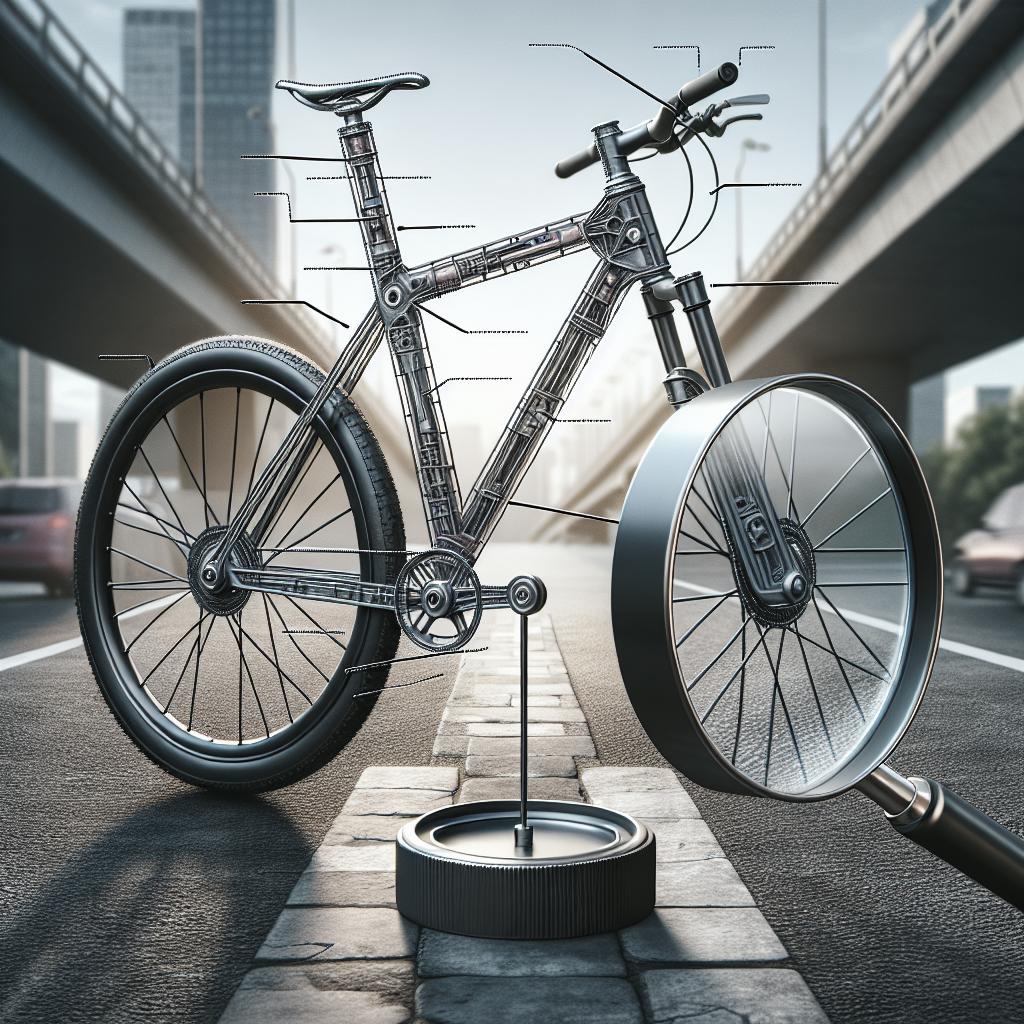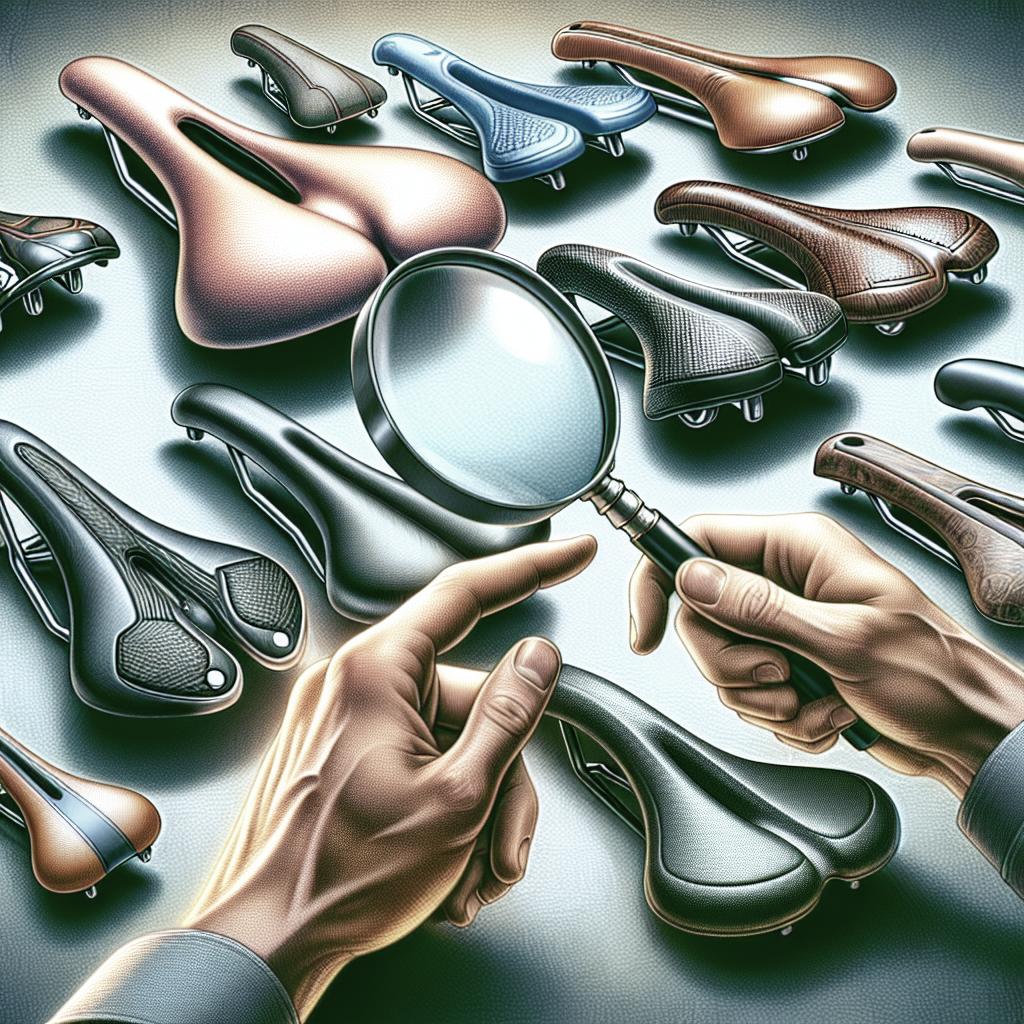“`html
How to Detect Bike Frame Damage
Bicycle frame damage can lead to serious accidents and injury if not identified promptly. This article provides an insightful guide on identifying damage to your bike’s frame, focusing on the four main types—Steel, Aluminum, Titanium, and Carbon Fiber. Understanding the dangers of damaged carbon fiber is crucial due to its potential to cause catastrophic failures. Additionally, we will discuss what actions to take following a bike accident to ensure safety and maintain your bike’s integrity. Being equipped with this knowledge empowers you to maintain your bike proactively and ensure your safety on the road.
The 4 Types of Bike Frames
Steel
Steel frames are known for their durability and strength, often preferred by touring enthusiasts for their ability to withstand loads and absorb shock. However, steel can rust if not properly maintained, and rust can weaken the frame over time, making it susceptible to cracks and deformation. Regular inspection for rust and signs of bending at stress points, like the joints, can help maintain the frame’s longevity.
Detecting damage involves checking for unusual creaks during rides, visual inspections for rust, and running your fingers along the frame to feel for small bumps or indentations. Pay particular attention to areas around welds where stress is highest. Ensuring your steel frame is kept clean and dry post-rides will mitigate the risks of long-term damage.
Aluminum
Aluminum frames are popular for being lightweight and affordable, providing a good balance of strength and performance. Unlike steel, aluminum does not rust, but it can still corrode, which may lead to weakening if the protective layer is breached. Damage often manifests through hairline cracks near joints and welds.
Cyclists should perform regular checks to look for any visible cracks, particularly following high-impact incidents. Feeling for any flex or unwarranted play when riding can also indicate structural weaknesses. Since aluminum does not have the endurance of steel, thorough checks post-accidents should be a routine.
Titanium
Titanium frames are renowned for their strength-to-weight ratio, offering a durable yet lightweight option that resists corrosion very well. Despite its resilience, titanium can suffer from fatigue and stress fractures, particularly in high-stress areas such as the bottom bracket and head tube areas.
Regular inspections should focus on identifying unusual creaking, checking for alignment, and confirming integrity through meticulous visual inspections. While repairable, titanium damage often requires professional workshops due to its complex handling nature, making early detection crucial in conserving the frame’s viability.
Carbon Fiber
Carbon fiber is a popular choice for high-performance bikes due to its lightweight and exceptional strength characteristics. However, it’s also known for being susceptible to catastrophic failures once damaged. Unlike metal, carbon fiber does not dent or bend—instead, it shatters or cracks, often invisibly to the naked eye.
Regular non-destructive testing, such as ultrasound or tap testing, can help detect internal damage. Look out for any surface scratches that penetrate deeper and audible changes in sound when tapping the frame. Even minor impacts can require professional inspection, given the severe implications of undetected damage to carbon fiber frames.
Why Damaged Carbon Fiber Is So Dangerous
When a carbon fiber frame is compromised, the risks can be substantially higher than with traditional materials. Carbon fiber can experience interior splintering that remains unnoticed until complete failure occurs, posing significant danger during rides. Unlike metals, which provide gradual warnings of impending structural collapse, carbon fiber can break suddenly and without much prior indication.
This makes it essential for cyclists to be informed about the fragile nature of this material. Having regular expert inspections and seeking immediate professional assistance when a suspicion arises can mitigate the risk of unexpected failures. Furthermore, understanding the exact limitations and behavior of carbon fiber under strain can improve overall cycling safety.
What To Do After a Bike Accident
After experiencing a bike accident, swift and thorough assessments are crucial for both rider safety and the condition of the bike. Inspect your bike on-site for visible damage, paying close attention to the frame, wheels, and handlebars. Listen for unusual sounds when riding, indicating potential hidden problems.
Post-accident, it’s advisable to take the bike to a professional bike shop for a detailed inspection, especially if your frame is made of carbon fiber. Professionals can perform comprehensive checks and utilize specialized tools to identify damage that is not visible to the untrained eye. This step ensures the continued safety and performance of your equipment.
Future Prospects
| Type of Frame | Potential Damage | Inspection Tips |
|---|---|---|
| Steel | Rust, cracks | Visual inspection, sound check, feel for indentations |
| Aluminum | Corrosion, cracks | Check for cracks, listen for flex sounds |
| Titanium | Fatigue, stress fractures | Listen for creaks, visual alignment checks |
| Carbon Fiber | Shattering, invisible internal damage | Non-destructive testing, professional inspections |
“`


